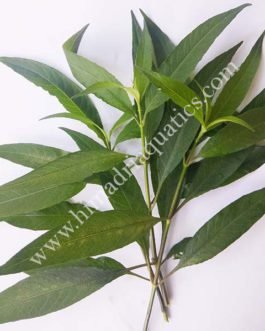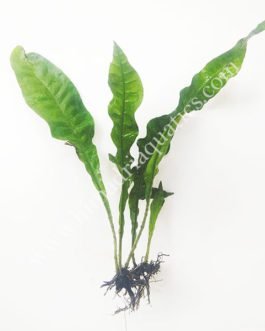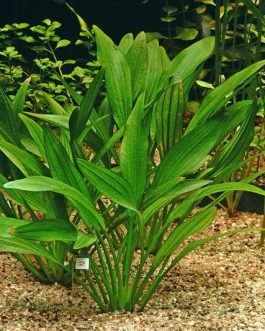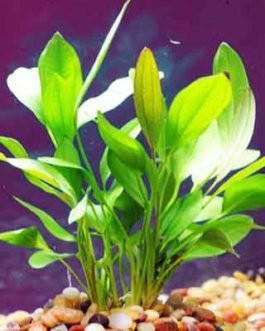Staghorn Fern
Original price was: ₹1600.₹439Current price is: ₹439.
Out of stock
Email when stock available
Description
Quantity- Single Plant
Staghorn fern is commonly called Elkhorn ferns or Moosehead Ferns due to the forked or antler like appearance of the fronds and that are gorgeous and versatile to use in home decor. Staghorn fern makes a great ornamental adornment for a wall indoors or outdoors. Fern leaves are actually called fronds. The leaves are elongated, erect or pendulous, and repeatedly forked, hence the name staghorn. They have two types of foliage, they are either heart-shaped (if sterile) or branched (if fertile). The fertile or foliar fronds are brighter green, forked, and strap-shaped. plant. As they age, their color turns to a shade of soft cinnamon. Most people would consider the “leaves” growing up from the base. These irregularly lobed, arching fronds grow up to 18 inches long.
Staghorn is fascinating to grow in a moss-lined wire hanging basket. As the plant develops, it pokes out new offshoots from all sides of the basket, eventually forming a big and attention-grabbing ball of fern.Their native primarily to Africa, Australia and Southeast Asia, whose fronds supposedly resemble the forked antlers of male deer or elk.They thrive when grown outdoors but can also live indoors with the right atmosphere and proper care.
The plant’s common name comes from the shape of those fertile fronds, which branch out to look like antlers. Staghorn ferns are epiphytes, meaning that they grow on the branches of other plants.But they are not parasitic, because they get their nourishment from the air and rain, not from their host plant.They thrive when grown outdoors but can also live indoors with the right atmosphere and proper care.In the tropics staghorn ferns grow to truly massive proportions. Their roots hold them in place, and they absorb water and nutrients through their fronds.
This plant has the ability to remove pollutants, including formaldehyde, xylene, and toluene — which have been thought to cause headaches, trouble breathing, and the growth of cancerous cells from air, soil, or water.Ferns are able to absorb gases through their leaves and roots.
For those looking for an artistic addition to their indoor garden, the Staghorn Fern is an ideal plant. You can enjoy the mature plant mounted on wood while immature plants are able to be grown in a pot.In India you can buy dracaena reflexa plants online anywhere through our website. We have delivers to Andhra pradesh, Arunachal pradesh, Assam, Bihar, Chattisgarh, Goa, Gujarat, Haryana, Jammu kashmir, Jharkhand, Kerala, Karnataka, Punjab, Orissa, Mizoram, Tamil nadu,Rajasthan, Sikkim, Manipur, Meghalaya, Telangana, Tripura, Uttar parade, Uttarakhand, Himachal pradesh, Nagalandand West bengal.
🍁Water: Give water once per week in dry, hot times of year, and once every two to three weeks during cooler months.
Staghorn ferns absorb water through their fronds, as well as their roots. This means that they respond well to misting and appreciate humid spaces.
It needs plenty of water during the spring and summer. These are the main growing months and they will consume the most water during this time period.
As the temperature rises, you will need to give the plant more water, when the temperature drops, it will need to be watered less often. Don’t overwater the plant because this can lead to root rot and harm your plant.
🍁Fertilizer: Fertilizing your staghorn fern will promote vigorous growth, especially in younger plants. Using banana fertilizer for staghorn ferns is an easy way to maintain your plant’s health while reducing kitchen waste.
You can also use organic fertilizers such as diluted fish emulsion, applied every two to three weeks in spring and summer seasons. Depending on the size of your fern, feed it with up to four banana peels a month to provide potassium plus smaller amounts of phosphorus and micronutrients.Mature staghorn ferns can survive with a twice-yearly feeding.
🍁Sunlight: Staghorn ferns need bright, indirect or diffused light to thrive.This is best achieved by placing them next to the brightest window in the house. All directions are fine, but west-facing windows might expose the fern to too much direct afternoon sun. Although staghorn ferns thrive in partial shade, they aren’t adapted to living in full shade.
The Staghorn Fern does not tolerate low light locations very well and will slowly decline in health, so during winter months you may have to move your plant to a sunnier location or closer to the window.
🍁Soil: Plant loves an acid compost mix and must be kept moist. Staghorn ferns can grow in pots, but they should not be planted in mineral soil. Instead, use a well-draining planting medium made primarily of organic matter. Fill the pot about half-full with a loose, well-drained, porous potting mixture: preferably something like shredded pine bark, sphagnum moss or a similar medium. You can use up to one-third regular potting mix, but never use garden soil.
🍁Temperature: The plant thrives in warm temperatures of 26.6°C– 32.2°C, low of 15. 5°C.They will die at or above freezing temperatures if they don’t have adequate protection.
🍁Propagation: You can propagate the plant either by spore or through division. So, take a mature Platy cerium and divide it into smaller, independent plants using a sharp knife and mounted to a board, using sphagnum moss as a backing and securely tying the new section to the board that may later be attached to a chain and tree. The new Staghorn will grow right over its new mount.You can also propagate by detaching buds in the spring or summer and planting in compost.
🍀Common problems:
The plant is prone to the fungal disease black spot, do not over water the foliage and minimize humidity indoors to prevent. the disfiguring spores. Scale insects can also be a problem.
🍀What make it special:
Ø Rarest and stunning indoor plant.
Ø The leaves are very attractive and bright green coloured.
Ø It is easy to care.
Ø They easily grow in low to medium light and moderate moisture.
Ø They are non-toxic to humans and other organisms.
Ø They are good air purifying plants.
Sr. Item name
1 Staghorn fern
2 4-inch (10 cm) grower round plastic pot (black)
3 4.5-inch (11 cm) Ronda no:1110 round plastic planter white.
🌱plant specifications:
Plant height 2-3 feet
Plant spread 3-4 feet
Above specifications are indicative only, actual dimensions may vary by +-10%
Common name Elkhorn ferns
Maximum reachable height. Up to 3 feet
Leaf colour Dark green coloured
🌱Plant protection:
Ø Never place a staghorn plant in direct sun, as the rays will scorch its leaves.
Ø This plant requires more water than most indoor plants so give water frequently but allow the plant medium to dry out in between.
Ø Must give bright indirect sunlight.
Ø Fertilize them once per month.
❌️Don’ts:
Ø Don’t over water the plant, because this can lead to root rot and harm your plants.
Ø Don’t give direct sunlight, it will cause scratches on leaves.
Only logged in customers who have purchased this product may leave a review.









Reviews
There are no reviews yet.